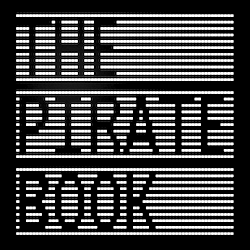C'è quel che c'è e di quel che c'è non manca nulla
La mia mostra sui trent'anni di lavoro sta ancora svolgendosi alla Galleria Antonio Colombo di Milano.
Per l'inaugurazione ho ideato la seguente performance: mentre disegnavo dal vivo chiunque poteva disegnarmi sulla schiena. Mi sono vestito da vecchio marinaio, e l'effetto finale è stato quello di una schiena tatuata in decine di porti diversi, anche in qualche galera. Non mi dispiaceva affatto come risultato, ed è stato un peccato doversi lavare dopo. Qualche originalone consigliava di riprendere i disegni realizzati sulla schiena e di tatuarmeli sul serio, ma non l'ho fatto, vorrei tenermela sgombra magari per qualche altra idea, e poi non mi dispiaceva di poter cancellare la lavagna di pelle, come non mi dispiacerebbe dopo questa mostra cancellare ogni effetto nostalgico e riprendere tutte le idee abbandonate , tutti gli spunti creativi, tutti i progetti impolverati e riuscire a portarli a termine. In effetti con la distanza temporale molti non sembrano per niente importanti. Ma per fortuna esiste il testo che Gianluca Marziani ha scritto per la prefazione del catalogo della mostra, dove con molta generosità conia il termine Giaconismo, che poi potrebbe trasformarsi se volete anche in giaco-iconico, oppure in dispregiativo (una giaconata).

il giorno dopo, prima della doccia
foto di Roberto Gennari Feslikenian
Gianluca Marziani
Allora, caro Massimo, siamo al momento del resoconto parziale, della testa bicefala che guarda indietro mentre cammina in avanti. Decenni di lavoro che si raccolgono attorno ad un progetto riassuntivo, un dono visivo di sintesi e raccordi, scoperte e recuperi, pensamenti e ripensamenti. Non è mai semplice raccontare le molteplici combinazioni di un factotum irriverente e intuitivo, le visioni multiple di un artista che crea nuovi confini per non averne mai di predefiniti. Tutto diviene slittamento, apertura di senso, varco dopo varco, ciclo dopo ciclo, tra conclusioni parziali e introduzioni totali, rischi e consapevolezza, invenzioni e mutamenti. Non è semplice ma giusto che le tue combinazioni artistiche abbiano un criterio finalmente riepilogativo, una ragione olistica che sia propedeutica ai tuoi viaggi istituzionali, dove le migliori storie diventano esempio singolo e guida plurima. Poche settimane fa la Triennale ha enfatizzato le tue ceramiche, offrendo una selezione del tuo dono visionario. Da qui immagino il domani dentro altri musei, dove i tuoi resoconti meritano ospitalità principesca, dove le tue trasgressioni linguistiche meritano il rispetto della Storia. Non preoccuparti, le cose stanno cambiando nel nostro Paese, e non soltanto in peggio come troppi si ostinano a ribadire. Non vedo ulteriori venti di crisi nella Cultura, già da tempo le nostre istituzioni creano mare mosso e uragani come status quotidiano. Sono anni che agiamo in stato d’emergenza, abituati all’apnea del rischio, del poco tempo, del poco denaro ma non del poco pubblico e del poco consenso. Questi, però, sono giorni di cambio direzionale, ore in cui la crisi diviene condizione stabile e dove nuovi parametri stanno ricodificando idee, strutture e organizzazioni. Non è un augurio ma una dichiarazione convinta: ormai ti toccherà il museo come residenza ad ampio spettro, dimora sospesa per i tuoi universi artistici. Hai rotto regole, inventato stilemi, elaborato meccanismi autonomi: e adesso meriti il codice istituzionale come giusto abito da indossare, il tuo dress-code rigoroso da alternare al latex del tuo habitus cerebrale. Con un particolare in più: dovrai continuare a spremerti le meningi, regalarci altre visioni di pari potenza espressiva, dare peso specifico al tuo etabetismo infaticabile, provocatorio, affilato, ironico, assurdamente sensato. Insomma, vada per lo smoking (rosso) ma senza pensare che sia per tutta la giornata: perché quando il museo chiude le porte ti voglio nei paesaggi rosso lucido del rischio, nelle geografie psichiche del mondo rovesciato, dove le nostre membra, cervello compreso, non si stancano mai (anche se ormai non sei più un ragazzino).



foto di Pier Maulini
Pochi artisti meritano un ISMO personalizzato, un ruolo archetipico che gestisca il passato in posizione dominante. Non siamo un Paese normale, questo va detto, altrimenti sentiremmo in giro un aggettivo che origina dal tuo cognome. Anche perché la memoria non mente: hai fatto tante cose prima di molti altri, anticipando il crossover che ormai consideriamo norma, gestendo i tuoi talenti con parsimonia raziocinante. Rappresenti un modello d’azione creativa che ha plasmato la lezione storica degli anni Sessanta, travasandola nel postmoderno con doti estetiche e intuizioni concettuali. La cosa è seria, benché i nostri linguaggi (la tua arte, la mia scrittura) distillino flussi d’ironia e stravaganza; la cosa è molto seria quando mi chiedo perché non si diffonda un GIACONISMO come statuto ufficiale della COMBINAZIONE LINGUISTICA, un riferimento che dovrebbe raccordare chiunque sia arrivato dopo di te. Sei un indubbio riferimento, su questo nessuno può toglierti il merito che ti compete; vorrei che nei prossimi anni si ampliasse la consapevolezza borghese, quella forma di rispetto ulteriore che nasce dall’alto per dare aura a chi arriva dal basso, dai territori underground in cui ti sei formato, dall’antagonismo e dai situazionismi che ti hanno educato. Insomma, conosciuto da molti, amato da alcuni, stimato da moltissimi (e detestato quanto serve, altrimenti qualcosa non funziona).

Stavo rileggendo alcuni miei scritti che ti riguardano. Ripropongo un estratto per l’aderenza sintetica al giaconismo:
Massimo Giacon accorcia la distanza tra lo spettatore e il mondo deformato, anormale, eccessivo. Manipola i corpi crudi e crudeli, libera il flusso trasgressivo, deborda oltre i bordi dei generi degenerati. Atti visionari, talento esecutivo e ironia: miscela espressiva di un artista dal multilinguismo genetico, a suo agio nel disagio del comportamento senza falsi pudori e stupidi rumori. I suoi eroi sono eretici, dissacranti, ingenuamente anarchici. Perdenti per natura o vincenti per artificio. Perdenti per forza di cose o con la forza delle cose in azione. La vittoria sta nei loro sguardi, nel loro feticismo, nei loro desideri. Ma anche nel senso del gioco, nel senso mai unico, nel gioco sensato. Disegni, pitture, opere digitali, progetti installativi, oggetti di design, videogames, fumetti, grafica: questo ed altro per plasmare i suoi personaggi “al limite” e creare il mondo oltre quel fatidico limite. Una modellazione fisica del nostro spazio interiore, dei desideri nascosti, degli eccessi che ci portiamo appresso. Massimamente Massimo: il fuoco cammina con lui.

Partiamo da qui per ripartire in ogni dove possibile e immaginabile. Giacon è un poliedro colorato e dinamico, un volume fluttuante nello spazio dell’opera totale. Esiste un ordine cronologico di carriera ma i fatti ribaltano di continuo ogni progressione lineare. Giacon incarna una sinusoide randomica, è l’artista propulsivo e famelico che rimbalza tra sfide progettuali. Non farò il biografo né lo storico filologico, mi sembrerebbe un’autostrada noiosa davanti ad un artista che corre su tornanti e strade pericolose. Andrò avanti per lampi, incroci e combustioni, sulla falsariga di una verariga alla Giacon, a modo mio che significa anche “a mondo suo”, specchio contro specchio per un arcobaleno a molte teste e moltissimi colori intermedi.

Chiariamo subito un equivoco storico: Massimo Giacon non c’entra nulla con le etichette che girano sui media. Le sue anime sono molteplici e conviventi, si alimentano con regolarità ciclica affinché nessuna fagociti le altre. Questo significa che non possiamo parlare di Pop Surrealismo, Neo Pop, Postdesign... Classi e categorie aiutano critici e curatori, semplificano l’ordine classificatorio, creano aree comuni da gestire come fenomeno; di fatto, limitano il potenziale dell’artista poliedrico, vincolandolo al regolamento d’uso che etichetta ma non chiarisce. Massimo, mi rivolgo di nuovo a te per dirti che i marchi collettivi non ti si addicono, tu sei un archetipo e dovresti trasformarti in un marchio DOP delle arti visive, un propulsore singolo di entità ad alto tasso iconografico. Ti capisco quando dici che in Italia non è semplice affermare l’eclettismo come codice ufficiale, restiamo un serbatoio di qualità artistiche eppure crea panico l’artista inclassificabile, allergico a qualsiasi categoria poiché il suo nome è già una categoria senza copie. Per me vale l’ostinazione del talento, la coerenza come continuità, solo così accetti la prolungata sfida col pubblico e rischi un’affermazione di categoria. Quindi una sola regola: avanti con le proprie convinzioni (come hai sempre fatto, per questo hai vinto la sfida del tempo), anche perché la gente che di solito mi piace adora la tua arte e ciò che di solito ti piace. E questo significa una sola cosa: che la minoranza di questo Paese è ancora meglio della maggioranza. E poi diciamolo: perché certe immagini dovrebbero piacere a tutti? L’arte può essere borghese, varcando soglie di merito, ma non può trasformarsi in un soggetto democratico e populista. Non vedo niente di meno democratico della creazione, ultimo atto divinatorio per affermare l’io creatore con le sue chimere legittimabili. Evviva l’ottusa parzialità della grande arte…

L’ORIGINE DEL (PROPRIO) MONDO… il disegno come nascita necessaria, partenogenesi d’obbligo che plasma la ricostituzione del reale. L’origine dei propri mondi avviene sul foglio bianco, sopra taccuini e sketchbook, lungo foliazioni che diventano filiazioni intime per definire il codice primario del Genoma artistico. Giacon disegna con tratto talentoso, gestisce il segno con frequenze orientali e radicalismi personali, la sua minuzia si fa corpo e gesto, i suoi personaggi moltiplicano il regime identitario e coprono una moltitudine di gender interiori. Plasmare un proprio mondo richiede doti visionarie e una traduzione segnica che sublimi la figurazione: e Massimo lo fa. Se tradurre significa disegnare con adeguata pregnanza, allora tutto è possibile, quantomeno plausibile, quindi realizzabile: e Massimo lo fa. Mi raccomando Massimo, non perdere il battito primordiale delle punte che disegnano mondi. I tuoi mondi. I nostri mondi. Nuovi mondi che si svelano.
FUMETTO… Giacon ingaggia lotte ciclopiche con gli universi visivi, esprimendo un antagonismo atavico che non possiamo riassumere in un solo tema. Lo stesso Giacon disse anni fa: “I miei superfumetti superano la propria genetica, diventano qualcos’altro, che peraltro neanch’io so bene cosa sia”. Di recente campeggia sulla carta di XL, dal passato spuntano testate di giusta mitologia urbana, nel mezzo arrivano carte e tele in cui il fumetto si trasforma senza perdere identità d’origine, assumendo la coscienza iconografica del quadro pittorico, la valenza universale dell’icona senza passaporto o narrazione.
foto Gregorio Spini
DESIGN… parto dal presepe (“Portable Xmas”) per ALESSI, oggetto di pura sintesi che non dissacra il sacro ma sacralizza il tratto liberato. Un oggetto laico dentro le abitudini religiose della festa: e quando dico “laico” intendo l’attitudine che ha determinato quel disegno, il passo sospeso del primo sguardo, dell’istinto che si traduce in segno su carta. Da qui la magia della produzione industriale con un’azienda che somiglia al DNA di Massimo. Gli SWATCH in edizione speciale erano un altro tocco di giaconismo virtuoso, tatuaggi cronometrici che esaltavano il plasticismo plastico. Due aziende in cui Giacon si adatta come liquido dentro uno stampo. Due punti topici in un curriculum che vanta innumerevoli collaborazioni nel settore industriale. Esercizi di continuo slittamento linguistico e metamorfismo plastico. Esercizi di combinazione artistica.

CERAMICHE… mi lego alla mostra in Triennale, sintesi espositiva di una bella collaborazione con SUPEREGO e le loro tirature per progetti “altri”. Adoro l’antagonismo che si esprime mimeticamente con linguaggi nobili, competenza tecnica e intuito stilistico. Ordinare l’eccesso dentro il controllo, far germinare messaggi consapevoli attraverso il metodo e la tradizione. Le ceramiche di Superego amplificano la memoria storica con forme surreali e psicoemotive. Una perfetta traduzione del disegno in chiave scultorea, secondo logiche minuziose che ritrovo nell’intera produzione artistica di Giacon.

CULTURA DIGITALE… quando vidi i primi quadri digitali di Massimo capii una cosa: che il linguaggio elettronico può moltiplicare le qualità ataviche del disegno a mano libera, definendo il codice tecnologico della manualità. Mi ha sempre colpito quel legame speculare tra matita e penna Bamboo, come se il digitale fosse la seconda vita della grafite o dell’inchiostro, una vita simile ma anche complementare, uno stadio ulteriore nell’evoluzionismo della figurazione. Rivedo i suoi digitalismi e li trovo asciutti, privi di enfasi tecnologica, calibrati da una sapienza che è prima ideativa e poi formale.

THE POP WILL EAT HIMSELF… a proposito di legame tra disegno e digitale, ripensavo alla tua mostra da Mondo Bizzarro (Roma) con la cura del sottoscritto. In realtà fu una doppia personale visto che in contemporanea avevo curato una tua seconda personale da Lipanjepuntin (Roma). Leggi cosa scrivevo ai tempi: I protagonisti sono i pupazzi da cartoon che popolano il nostro immaginario. Senza tirare in causa i più famosi, da Topolino ai Simpson, a cui l’artista riconosce un’influenza capitale nella cultura contemporanea, ci si sofferma su soggetti di secondo piano con una rivisitazione che rivela il tema della perdita dell’innocenza. Malandati, deformati, acciaccati, vecchi pupazzi che riflettono, come fossero uno specchio, il livello di degrado morale e culturale da cui sono stati contagiati nella società odierna. La mostra è costituita da opere digitali su carta fotografica: partendo da programmi di modellazione 3D, Giacon conferisce una forma e una luce quasi caravaggesca alla sua galleria di pietosi cartoons. Le opere digitali sono accompagnate dagli schizzi preparatori a matita e da una grande tela su PVC in cui tutti i personaggi si ritrovano fusi in una massa di pelouche e tessuto necrotico.
Nel corso della mostra le sigle dei cartoni animati più conosciuti, deformate e trasformate in una sorta di lenta marcia funebre, faranno da colonna sonora.

PERSONAL JESUS… ho una predilezione per questo tuo disegno pittorico. Considero sublime lo sfaldamento progressivo del corpo di Cristo, realizzato con una calibrata china scura su pergamena. Un’immagine maestosa e sacrale, molto più “religiosa” di tante buffonate che spacciano per arte spirituale. No, non preoccuparti, evito di chiederti che rapporto hai con la religione. Ne abbiamo già parlato e non mi sembra il contesto per una disamina etica sulla trascendenza e altri temi di pari portata morale. Lasciamo che parlino le tue opere, trasgressive senza derive, dissacranti con sapienza, cattive senza nichilismo. Vedo maturità nel tuo approccio, niente di provocatorio o facile, al contrario mi fai sentire densità analitica e talento visionario. Hai captato un modo eccellente per narrare l’iconografia di Cristo in un’epoca come la nostra.

PHILOSOPHERS IN THE POP PLANET… qui le grandi personalità filosofiche si ritrovano in un mondo di fantascienze, frangenti splatter, riferimenti da b-movie americano e continue invenzioni stilistiche. I filosofi in chiave iperpop, ancora oggi trovo quel ciclo una piccola bomba concettuale, un lavoro affilato e colto, unico per genere e modo, riprova di un metodo linguistico che si mimetizza tra temi alti e bassi, estremi e popolari.
SUONI… la parte musicale dovrete ascoltarla, solo le vostre orecchie daranno senso ai progetti sonori di Massimo. Diciamo solo che la musica non rappresenta un semplice passatempo ma un prolungamento delle sue piattaforme visive, un territorio in cui la vertigine sonora completa le chiavi visive dei suoi sguardi.
Linguaggi molteplici che scambiano informazioni tra di loro, combinando elementi in una fluida sinestesia. La visione di Giacon è orchestrale, un polistrumentismo che calibra lo stridore e le dissonanze, inventando un suono estetico che è pienamente Giacon, inimitabile e archetipico come capita solo agli apripista coraggiosi. Quelle visioni sono popolate da svariati figuri, notturni ed eccessivi, ambigui, antropomorfi e mutanti, una nuova specie nell’umanità dei corpi esplosivi. Li trovo adorabili e difendibili, alieni tra noi “umani”, esseri psicosensoriali che danno un countdown al nostro sguardo inquieto.
SEXORCISMI… lascio in chiusura la parte più delicata, quella che riguarda il SESSO e la sessualità trasgressiva, intimamente consapevole ma anche estrema, adatta a pochi adepti, roba che scotta se non hai dimestichezza con il potenziale della testa dominante. Voglio parlarne in chiusura affinché sia la vera riapertura del testo verso il mondo reale, verso quell’aderenza empatica tra arte e vita, scrittura ed esperienza, estetica e azioni. Lo dico senza equivoci, nel senso che tali aspetti mi toccano nel profondo, rappresentano pezzi solidi della mia vita, diciamo che aderisco alle identità ironiche di Massimo. La cosa che più amo è l’attitudine dei suoi protagonisti BDSM, quel modo che non svilisce le pratiche ma toglie l’alone mortifero, dando una precisa estetica ai mondi descritti, vestendo corpi e azioni con riconoscibili giaconismi. La dimensione sessuale entra dovunque, circola nelle opere come elemento relazionale e distintivo, informa le azioni con parametri calibrati.

foto Rosario Gallardo
I personaggi del suo universo trasudano evocazioni sessuali, gareggiano coi propri fantasmi per sfogare gli istinti consapevoli. Sarà per questo che sono così brillanti, impareggiabili, anomali e indomiti?
Diciamo che mi fermo qui, caro Massimo, altrimenti mi tuffo nell’argomento e devio su strade che mi porterebbero lontano dal centro.
Noi ci rivediamo presto, il futuro dei musei aspetta anche te.
Per me, sempre e solo GIACONISMO
Gianluca Marziani, maggio 2013
foto di Josè Sala













 For hundreds of millions of people piracy is mostly an online phenomenon.
For hundreds of millions of people piracy is mostly an online phenomenon.  El Paquete ad (
El Paquete ad (



.jpg)


























































